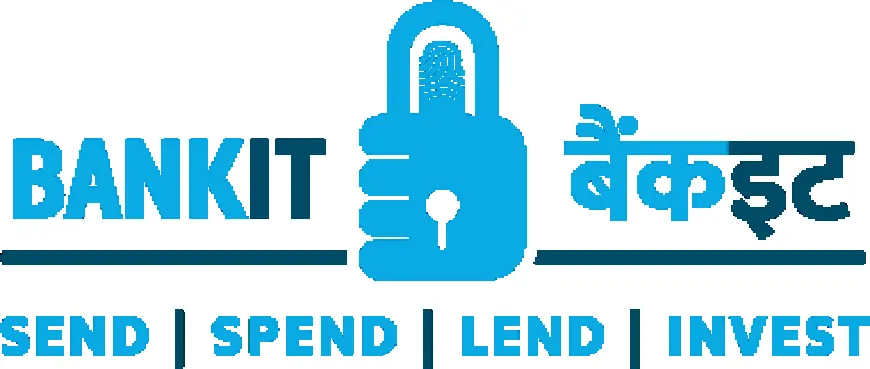What You Need to Know About Micro ATMs, Aadhaar Pay, and Money Transfers
bankit
In an age where technology is redefining how we interact with the world, banking and financial services are not immune to this transformation. Financial access has been a persistent challenge, especially in rural and underserved areas. However, innovations like micro-ATMs, Aadhaar Pay, and modern money transfer systems are changing the narrative by making banking services more accessible to all. This blog post aims to provide you with a comprehensive understanding of these concepts, their functionalities, and their significance in promoting financial inclusion.
The Need for Accessible Banking Solutions
For many individuals, particularly in rural regions, traditional banking services can seem out of reach. Long distances to bank branches, limited banking hours, and cumbersome procedures often create barriers that prevent people from accessing essential financial services. This situation is where micro-ATMs come into play.
Micro ATMs are designed to enhance banking accessibility by enabling transactions in remote locations. These portable devices allow agents—often local business owners or community members—to offer essential banking services, ensuring that individuals can access their funds without traveling long distances. This is a game-changer for rural populations, who may not have a bank branch nearby.
What Are Micro ATMs?
Micro ATMs are compact devices that resemble traditional ATMs but are designed to operate differently. They enable bank agents to conduct transactions on behalf of customers. The services offered by micro-ATMs are extensive, including:
· Cash Withdrawals: Users can withdraw cash directly from their accounts without visiting a bank branch, making it convenient for those who might find travel difficult.
· Balance Enquiries: Customers can check their account balances in real time, facilitating better financial management.
· Deposits: Many micro-ATMs also allow users to deposit cash into their accounts, enhancing the range of services available in underserved areas.
By enabling transactions at the local level, micro-ATMs significantly improve the accessibility of banking services, particularly for individuals in remote areas. This innovation is a critical component of the broader financial inclusion strategy in India and beyond.
For further insights into how micro ATMs function and their advantages, you can visit MicroATM Services.
Aadhaar Pay: Simplifying Transactions
While micro-ATMs enhance accessibility, Aadhaar Pay takes it a step further by facilitating cashless transactions through biometric authentication. This service is particularly significant in India, where the Aadhaar system—a unique identification number assigned to residents—acts as a secure digital identity.
The Aadhaar Pay service works by allowing users to make payments using their Aadhaar numbers, which are linked to their bank accounts. The process is straightforward and consists of the following steps:
1. Biometric Authentication: To initiate a transaction, users authenticate their identity using biometric data, such as fingerprints or iris scans. This method ensures that transactions are secure and that the person making the payment is the rightful account holder.
2. Cashless Transactions: Once authenticated, users can transfer money or make payments without needing physical cash or cards. This is especially useful in regions where banking infrastructure is limited, as it eliminates the need for carrying cash.
3. Inclusivity and Security: By enabling cashless payments, Aadhaar Pay promotes financial inclusion among those who might not have access to traditional banking services. The biometric authentication adds an extra layer of security, reducing the risk of fraud and identity theft.
The combination of micro-ATMs and Aadhaar Pay is particularly powerful, as they work together to create a seamless banking experience for users in remote and underserved regions.
Understanding Money Transfers in the Modern Era
The ability to send and receive money effortlessly is a cornerstone of contemporary banking. Traditional money transfer methods often involved lengthy procedures, high fees, and delays that frustrated users. However, the rise of digital money transfer services has revolutionized this landscape, providing users with faster and more cost-effective solutions.
Digital money transfer services are designed to meet the demands of users seeking quick, reliable options for sending money. Whether for personal remittances, business transactions, or bill payments, these services make financial transactions convenient and straightforward. Here are some key features of modern money transfer systems:
· Speed: Transfers are typically instantaneous, allowing recipients to access funds immediately. This quick turnaround time is especially valuable in urgent situations where funds are needed right away.
· Low Fees: Many digital platforms offer competitive rates, making it more affordable to send money across borders or domestically. Lower fees encourage more people to utilize these services, further promoting financial inclusion.
· Convenience: Users can initiate transactions from the comfort of their homes or while on the go. This eliminates the need for physical trips to a bank or money transfer outlet, saving both time and effort.
· User-Friendly Interfaces: Most digital money transfer services feature intuitive designs that allow users of all ages to navigate the platforms easily. This accessibility is vital in helping more individuals take advantage of these services.
For those interested in exploring the various money transfer options available today, more detailed information can be found at DMT Services.
The Role of Technology in Financial Inclusion
The convergence of micro-ATMs, Aadhaar Pay, and digital money transfer solutions signifies a monumental shift toward financial inclusion. These innovations are not just about convenience; they are about creating opportunities and fostering economic empowerment for individuals who have long been marginalized by traditional banking systems.
1. Empowering Local Economies: By providing access to banking services, individuals are better equipped to participate in their local economies. This includes saving money, investing in small businesses, and accessing credit, all of which contribute to overall economic growth.
2. Building Trust in Financial Systems: When individuals have access to secure and reliable banking services, they are more likely to develop trust in financial institutions. This trust is crucial for encouraging more people to engage with banking services, ultimately leading to a more stable financial ecosystem.
3. Enhancing Quality of Life: Access to financial services can significantly impact an individual's quality of life. It enables better healthcare options, educational opportunities, and the ability to manage finances effectively. As individuals gain control over their financial futures, entire communities can benefit from improved living standards.
4. Facilitating Government Welfare Programs: With tools like Aadhaar Pay, governments can streamline the distribution of welfare benefits directly to beneficiaries. This reduces leakage and ensures that support reaches those who need it most, further promoting financial inclusion.
5. Promoting Digital Literacy: As more people engage with digital banking services, there is an accompanying increase in digital literacy. This knowledge empowers individuals to take control of their finances and explore other digital opportunities, thus fostering a more informed and financially savvy population.
The Future of Financial Services
As technology continues to evolve, so will the landscape of financial services. Innovations like micro-ATMs and Aadhaar Pay are just the beginning. The future holds the potential for even more sophisticated solutions that can address the diverse needs of the population.
Potential developments could include:
- Blockchain Technology: The integration of blockchain technology could enhance security and transparency in financial transactions, further building trust in digital banking systems.
- Artificial Intelligence: AI-driven platforms could provide personalized banking experiences, offering users tailored financial advice and insights based on their individual needs and behaviours.
- Expanded Service Offerings: As financial institutions adapt to the changing landscape, we may see a wider range of services offered through micro-ATMs and digital platforms, including insurance, investment options, and credit services.
- Cross-Border Transactions: Innovations in money transfer services could facilitate easier cross-border transactions, enabling individuals to send and receive money internationally with minimal fees and delays.
Conclusion
Understanding micro-ATMs, Aadhaar Pay, and modern money transfer systems is essential for anyone navigating the modern financial landscape. These services are not merely technological advancements; they represent a significant leap toward inclusivity and accessibility in banking. As we embrace these innovations, we collectively contribute to a more equitable financial ecosystem, ensuring that everyone has the opportunity to participate and thrive.
In conclusion, the ongoing evolution of financial services promises to enhance the lives of millions, creating pathways for economic empowerment and social development. By staying informed and engaged with these developments, we can better appreciate the impact of technology on our lives and work towards a more inclusive financial future for all.













